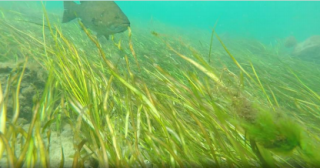Environmental Indicators in Aquatic Surveys

National Aquatic Resource Surveys (NARS) report on the condition of lakes, rivers and streams, wetlands, and coastal waters. These reports describe whether a region’s waters are in poor, fair, or good condition according to several indicators, which are intentionally chosen to represent overall aquatic health.
Indicators are most often a combination of metrics assessing environmental qualities, as opposed to an individual measurement. Individual metrics may not have enough information to provide useful insight into environmental health. Indicators are designed to include multiple measurements so that more complex conclusions can be made. For example, the water clarity indicator includes information about phosphorous, chlorophyll and dissolved oxygen concentrations in the water column. Each measurement is important for understanding phenomenon like eutrophication (excessive nutrients) in coastal waters. Scientists use indicators to provide environmental managers and other stakeholders a meaningful assessment that can direct decision making.
Indicator Research at EPA
EPA scientists continue to improve the indicators used to assess coastal waters with two approaches:
First, new technologies are being developed that will generate new metrics and improve existing indicators. For example, video of the lake bottom may be used to improve the assessment of benthic communities (bottom-dwelling species). Another research initiative is improving measurements related to algae nutrient consumption, which may help environmental managers identify where harmful algal blooms are likely to occur. Recently, scientists are looking into how genetic markers may be used to assess the vulnerability of coastal waters to invasion by non-native species or to provide early indicators of invasions. Adding new measurements to the NARS protocols is done carefully to make sure they can be consistently collected by field crews and to provide needed information.
Click on the pages below to learn more about:
Second, research continues to improve the assessment thresholds for indicators. Thresholds are the values of indicators or individual metrics that tell whether conditions are good, fair, or poor. Thresholds must be relevant to the waters being assessed. For example, Lake Erie water quality would always appear “poor” if assessed using Lake Superior’s thresholds because Lake Erie is naturally more eutrophic.
It is important for environmental management decisions to be made with information about an entire water shed, as opposed to just sections of waterways or bodies of water. Assessing connecting channels, embayments, and individual basins will improve NARS, though further research is needed to develop indicators and thresholds for these sites.
